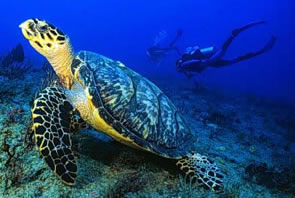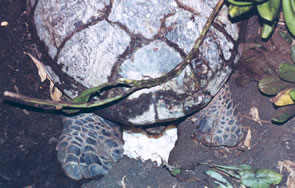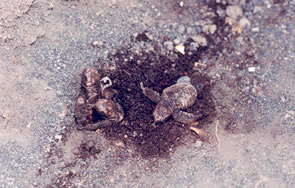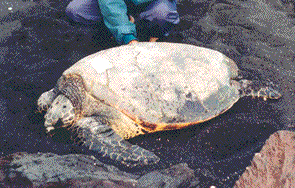
Atlantic Hawksbill
Eretmochelys imbricata
Description: The Atlantic hawksbill has scutes on its carapace (top of shell) that tend to overlap one another. It is brown in coloration. Males may be distinguished from females by their long and thick tails and more concave plastrons. The Atlantic hawksbill measures between 30 and 35 inches (76-89 cm) in carapace length and 95 to 165 lbs. (43-75 kg) in weight.
Feeding/Diet: Hawksbills are omnivorous. They consume both marine plants and animals, especially invertebrates.
Activity/Behavior: Once thought to remain in one area for their entire lives, they are now known to migrate long distances.
Habitat/Range: In North Carolina, this species has only been found in the open ocean. In more tropical environs it is commonly found around reefs and estuaries.
Reproduction: Most Atlantic hawksbills nest in the Caribbean. Clutch size varies between 53 and 206 eggs.
Miscellaneous: The hawksbill has very attractive carapace scutes. It is hunted for its shell, which is used to make carved “tortoise shell” items. It is listed as endangered by the U.S. Fish and Wildlife Service and is protected by law.

The shaded region represents the range of the Atlantic hawksbill sea turtle in North Carolina.



Photo by C. Hagen
Photo by C. Hagen


